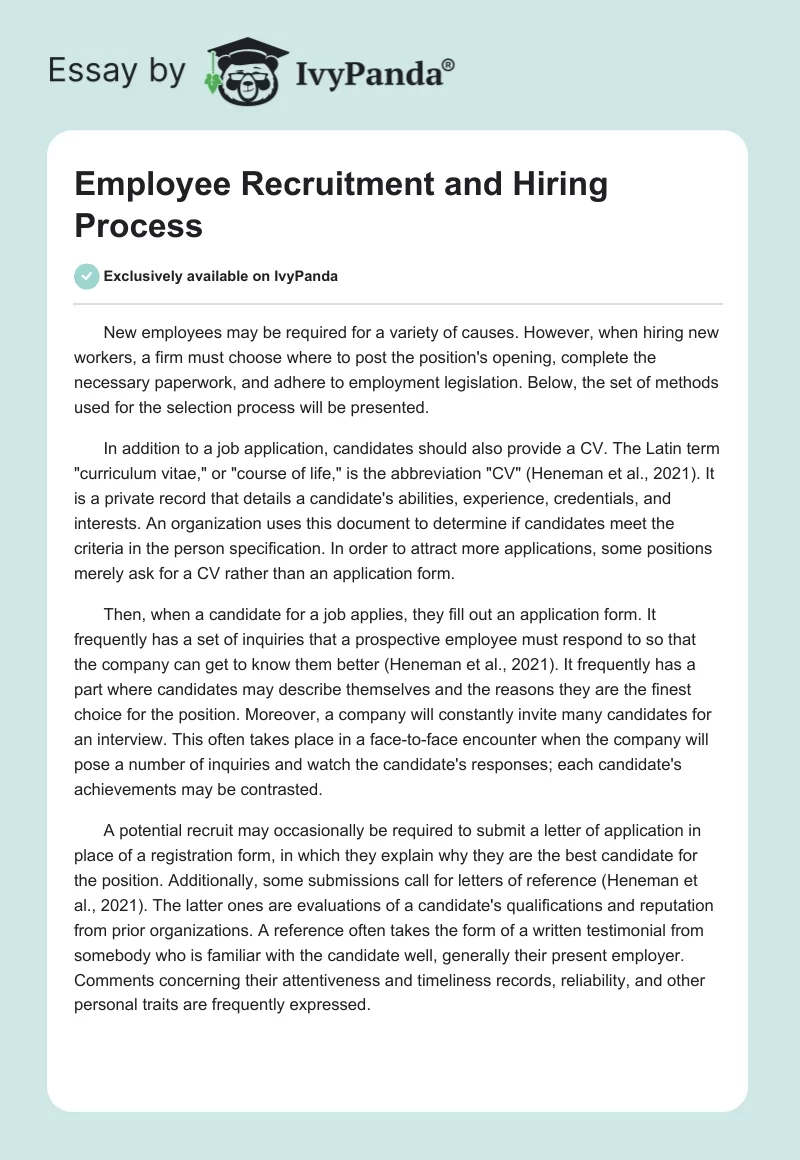New employees may be required for a variety of causes. However, when hiring new workers, a firm must choose where to post the position’s opening, complete the necessary paperwork, and adhere to employment legislation. Below, the set of methods used for the selection process will be presented.
In addition to a job application, candidates should also provide a CV. The Latin term “curriculum vitae,” or “course of life,” is the abbreviation “CV” (Heneman et al., 2021). It is a private record that details a candidate’s abilities, experience, credentials, and interests. An organization uses this document to determine if candidates meet the criteria in the person specification. In order to attract more applications, some positions merely ask for a CV rather than an application form.
Then, when a candidate for a job applies, they fill out an application form. It frequently has a set of inquiries that a prospective employee must respond to so that the company can get to know them better (Heneman et al., 2021). It frequently has a part where candidates may describe themselves and the reasons they are the finest choice for the position. Moreover, a company will constantly invite many candidates for an interview. This often takes place in a face-to-face encounter when the company will pose a number of inquiries and watch the candidate’s responses; each candidate’s achievements may be contrasted.
A potential recruit may occasionally be required to submit a letter of application in place of a registration form, in which they explain why they are the best candidate for the position. Additionally, some submissions call for letters of reference (Heneman et al., 2021). The latter ones are evaluations of a candidate’s qualifications and reputation from prior organizations. A reference often takes the form of a written testimonial from somebody who is familiar with the candidate well, generally their present employer. Comments concerning their attentiveness and timeliness records, reliability, and other personal traits are frequently expressed.
Reference
Heneman, H. G., Judge, T. A., & Kammeyer-Mueller, J. D. (2021). Staffing organizations (10th ed.). McGraw-Hill.


